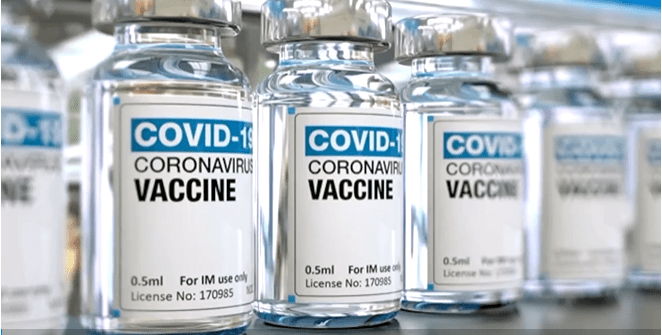Why are racial disparities in Michigan’s COVID-19 cases and deaths shrinking? from Detroit Free Press
January 23, 2021
The claim: In Michigan, “we were able to really flatten” the racial disparity in COVID-19’s impact “and make significant progress.”
Michigan Lt. Gov. Garlin Gilchrist, who chairs the state’s Coronavirus Task Force on Racial Disparities, claimed that steps taken by communities of color, along with state and local efforts, have helped alleviate COVID-19’s disproportionate impact on Black residents.
“I’m proud to report that in the State of Michigan, we were able to really flatten that disparity and make significant progress,” he said at an MLK Jr. Day Youth Conference.
Black residents make up 13.7% of Michigan’s population. But in April, they accounted for 42.93% of COVID-19 deaths, according to a Detroit Free Press analysis. That share has steadily decreased, and hit a low of 7.08% in November. Even during the second wave of the pandemic that began in the fall, the case rate among Black residents mostly remained below the rate for white people, according to data from the Michigan Department of Health and Human Services.
Michigan seems to have bucked the national trend, as Black communities across the country continue to experience disproportionately high death rates.
Gilchrist said the shift “is a tribute and a testimony, frankly, to people of color stepping up and doing the right things to keep themselves and their families safe.” He also credited local and state efforts to address COVID-19’s toll on communities of color.
It is impossible to know for sure what’s driving the trend. Experts we talked with backed up Gilchrist’s claim, but also pointed to other factors, including the way the pandemic has spread beyond the early hot spots.
Changing geography
The disparities have closed statewide. But Dr. Philip Levy, a professor at the Wayne State University School of Medicine and Wayne Health chief innovation officer, attributed the shift in part to Detroit. The onset of the pandemic in late March hit southeast Michigan hard, and Detroit — where the population is nearly 80% Black — became a hotspot.
In early November, cases began raging in western Michigan. And in the late fall and early winter, the Upper Peninsula saw a big increase in COVID-19 cases and deaths.
In the most recent phase, Detroit has stood out for its low infection rate, even compared with the rest of the metro area.
“Despite the rise, Detroit has stayed down,” Levy said. “Something must be going on, and the secret sauce, I think, is in the people themselves.”
Detroiters were impacted early
Dawn Misra, an epidemiologist at Michigan State University who conducted a mortality review of Michiganders who have died from COVID-19, said she suspects that the personal impact of the pandemic on the lives of Detroiters led the city’s residents to take the virus seriously.
“Everyone who lives in Detroit ended up being probably close to someone they knew who died,” Misra said.
Levy said Detroiters’ early and personal experiences led them to embrace mask-wearing and social distancing. “I think people really stepped up for their own personal responsibility and really recognized that they had an important role to play in this, and if people didn’t do that, more people that they knew were going to die,” he said.
Black Michiganders across the state have embraced mask-wearing. A survey conducted by the Michigan Department of Health and Human Services over the summer found that 81% of Black Michiganders reported that they always wear a mask compared with 69% of the rest of the population.
“They listened to the science,” Misra said.
Continue reading “Why are racial disparities in Michigan’s COVID-19 cases and deaths shrinking?” from Detroit Free Press.
Learn more about the Wayne Health Mobile Unit.
